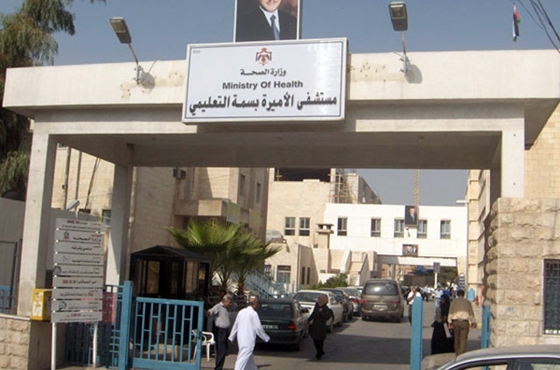Progress on two new medical facilities, located in Irbid and Amman, could add much-needed capacity to Jordan’s health sector as it copes with rising demand for health care services.
In mid-January the government began the pre-qualification process for the Princess Basma Educational Hospital project. The tender, which was originally floated by the Ministry of Public Works and Housing in November 2015, had received 13 separate bids from Jordanian and Saudi consortiums.
Construction on the 500-bed facility is set to cost around JD50m ($70.5m), with funding earmarked to come from the Saudi Fund for Development, Saudi Arabia’s $1.25bn commitment to the $5bn Gulf Cooperation Council (GCC) development grant for Jordan, announced in December 2011.
January also saw the opening of a new World Health Organisation (WHO) medical facility in Amman, created to serve as a regional center for health emergencies and polio eradication.
“Iraq, Syria and Yemen are just three in a list of countries in the region requiring large-scale, ongoing humanitarian health assistance,” Dr Ala Alwan, director of the eastern Mediterranean region at the WHO, said at the facility’s opening ceremony in mid-January.
“As we scale-up our regional capacity to respond to emergencies, the emergency team based here in Amman will have a key role in ensuring that in all 22 countries of the region, [the] WHO is better prepared to respond to current and new crises.”
Syrian crisis spurs medical demand
As Jordan’s refugee population has continued to increase, health care capacity has struggled to keep pace. The ratio of hospital beds per 10,000 people, for example, fell from 19.3 in 2010 to 18.6 in 2014, according to the latest data available from the Ministry of Health, with just 628 beds added over the period.
However, this data excludes the mounting Syrian refugee population, suggesting that actual bed-to-patient ratios may be much lower. As of November, the number of refugees in the country had reached 1.4m, King Abdullah II ibn Al Hussein told media outlets, equivalent to around 20% of the kingdom’s population.
According to a capacity assessment conducted by the Ministry of Health (MoH), the WHO, and a handful of other international partners, the MoH had incurred around $53m in additional costs by 2013, including $20m spent on vaccines, to cover the health care needs of Syrian refugees – a two-fold year-on-year increase.
A needs-assessment review from the same year, conducted in partnership with the UN Development Programme, found that the number of Syrian refugee visits to the MoH’s primary health care centers for outpatient treatment rose from 68 in January 2012 to nearly 16,000 by March 2013, with Syrian patients accounting for as much as 18% of all visits in some areas of the northern governorates of Irbid and Mafraq.
According to King Abdullah II, around 25% of the country’s budget has been devoted to caring for refugees, including basic infrastructure and social services.
Capacity considerations
While projects like the Princess Basma Hospital in Irbid and the WHO facility in Amman could help boost capacity, the government is also considering steps to increase the number of service providers in the country.
In March 2015, for instance, the MoH announced it would allow Jordanian doctors to continue working for up to five years past the retirement age of 60 in response to staffing shortages.
The option of putting Syrian doctors to work also remains on the table. Other countries in the region have explored similar measures, with the Turkish government announcing in January that it would loosen work permit restrictions for Syrians. Refugees under temporary protection in Turkey, including doctors, are currently allowed to provide services to refugee communities in camps.
In Jordan, the focus is on streamlining the provision of work permits for medical professionals and removing bottlenecks. At present, Jordanian citizenship remains a de facto requirement for licensing, as it is a precondition for acceptance to the Jordanian Medical Association.
Local stakeholders, for their part, are optimistic about the prospects of regulatory easing. “We have all these Syrian doctors who are qualified, and we could benefit from their expertise,” Naseem Samawi, executive director of the Italian Hospital in Amman, told media in December. “I think the government has the capacity to organize this.”
While the kingdom will need to continue juggling the needs of refugees and its own citizens – as well as a burgeoning medical tourism segment – long-term prospects are more promising, with higher demand providing added impetus to expand capacity and increase the standard of care at NGO, public and private medical facilities.
Oxford Business Group
25 February






















































